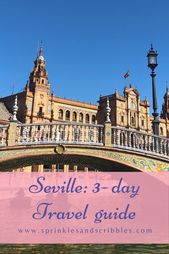Want to take your students out of the classroom and introduce them to their subject from a more contextual perspective? Geography trips are a great way to expose students to the world's changing environments in a more three dimensional way, and one in which they can relate more easily. The benefits of geography trips have been recognized for some time and today there are excellent companies on the market that offer comprehensive school group packages to many exciting destinations.
When studying geography, trips outside of the classroom and away from the textbooks prove extremely valuable and constructive. Students are encouraged to challenge theories, test their knowledge and bring different aspects of their subject together to form a clear overall idea. Any country would lend itself to some aspect of geography study, but choose the Bay of Naples for your next trip and your students will be blown away by the incredible influence geography has had upon one of the most densely populated cities in Europe – Naples.
Considering the Geographical Issues in The Bay Of Naples
The Bay of Naples is a geography student's dream destination. An area bursting with stunning physical features and a wonderful climate, the region is living in precarious times. The coastal plains rise up to rugged mountains and the pretty rural villages contrast with the industrial port of the city. Tourists flock to marvel at the dramatic coastline, with its incredible rock formations, beautiful islands and the crystal clear waters. Despite the poverty of the city and the economic issues of the area, the place holds tightly its historical monuments and precious heritage. The island of Capri is one of localized affluence and since the times of the Romans this island has attracted many visitors.
Volcanic soils make for wonderful growing conditions and the tomatoes grow on the slopes of Vesuvius are among the best in the world. Lemons, almonds, figs and grapes grow prolifically and even pawpaws are among the many other delicious fruits of the land here. The volcanic soils are an economic benefit, but conversely they issue a warning to the people that live in the city and its surrounding area. Mount Vesuvius is active and poses a constant threat. Climb to the top, walk around the crater and watch the gently puffing vapours breath from the lungs of this sleeping beast. Visit Pompeii and give students the opportunity to see the direct effect of living so close to such an unpredictable mountain. Students will discover what measures are in place for avoiding another catastrophe while considering the impact another episode would have on the city and its survival.
The Solfatara of Pozzuoli is the most interesting volcano of the Phlegreaen Fields, which consist of an astounding total of 40 volcanoes. With its active mud pits, famous Grand Fumarole, its bizarre landscape and therapeutic wells, this area is a must on geography trips to The Bay of Naples.
A school trip to this area of Italy is full of learning potential for students. From socio-economic issues to land-use problems, from the impact of tourism to the potential dangers of Vesuvius, there is much to be discussed and overlooked in this fascinating place.

